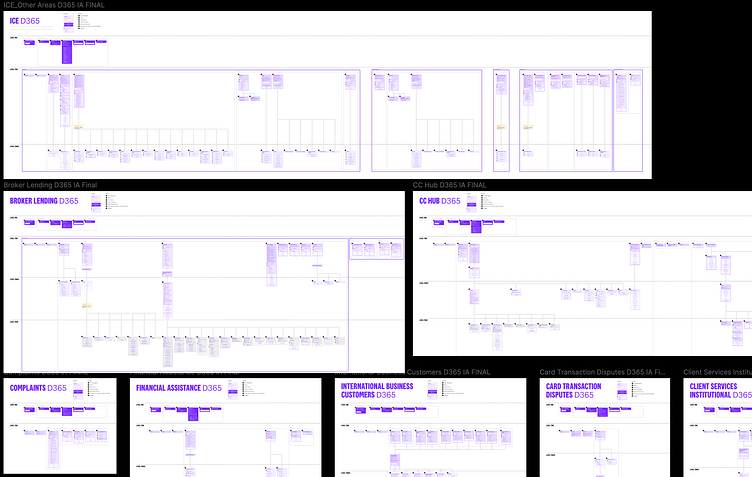IA | Comprehensive Analysis of CRM Interfaces
Problem: Bankers face inefficiencies due to overlapping processes and missing tasks across various CRM systems, impacting their ability to bring products and services to market effectively.
Approach: Utilized the Process Component Reference Model (PCRM) framework to systematically analyze CRM application interfaces, focusing on identifying redundancies and gaps at the task level.
Solution: Conducted an in-depth scrutiny of each interface, revealing specific tasks and instances of overlap, which highlighted missing tasks critical for bankers’ operations.
Impact: Set the stage for discussions on Architecture and Technology, addressing the need for integrating missing capabilities and exploring potential system migration or consolidation to enhance efficiency and streamline operations.
So What? Moving forward, we outlined key challenges that require resolution, along with strategic design hypotheses and initial steps for the upcoming initiative. We advocate for adopting a Human-Centered Design Approach to shape the future. This involves developing detailed personas and high-fidelity prototypes for validation with bankers, alongside compiling an Experience Backlog filled with capability scenarios ready for technological development. This strategy ensures that our solutions are not only technologically robust but also deeply aligned with the real needs and experiences of our users, laying a solid foundation for future enhancements.
Appendix: From the groundwork laid by the Information Architecture (IA) analysis, components have been developed to streamline future development efforts. This work emphasizes the critical importance of reusability as a fundamental principle for our Design System, ensuring it remains a focal point during the Design phase. Our findings were vast and varied, compiled into a single-view report.
(High-level process information on the above can be found inside my portfolio.)


